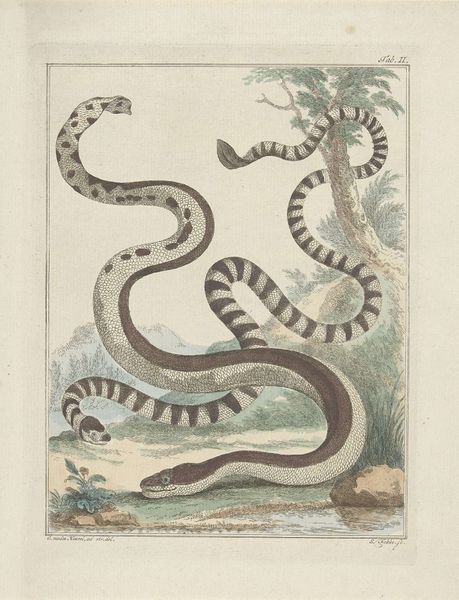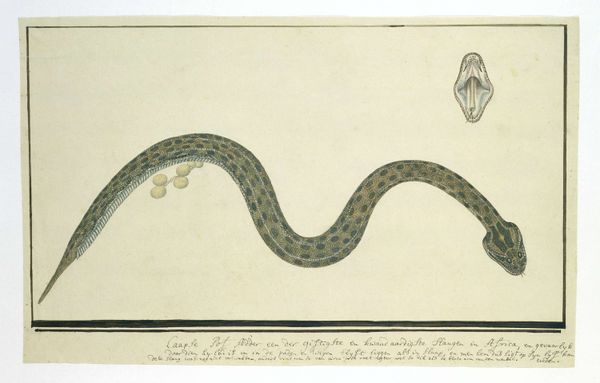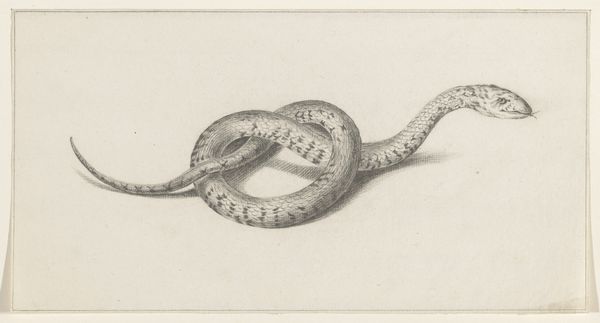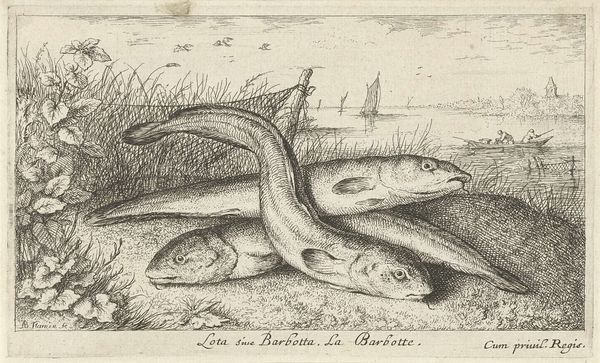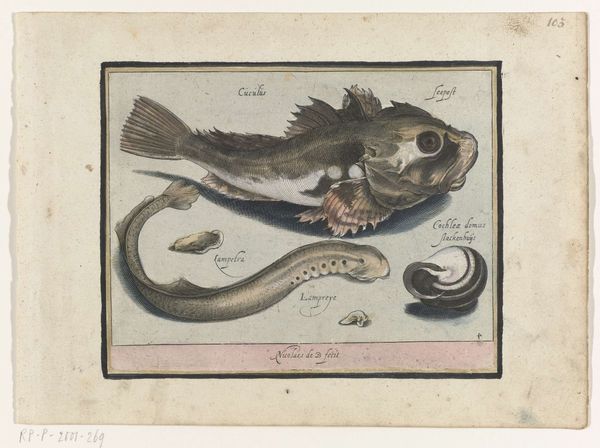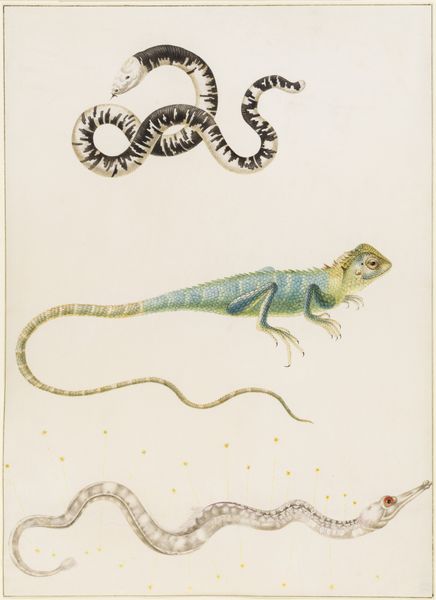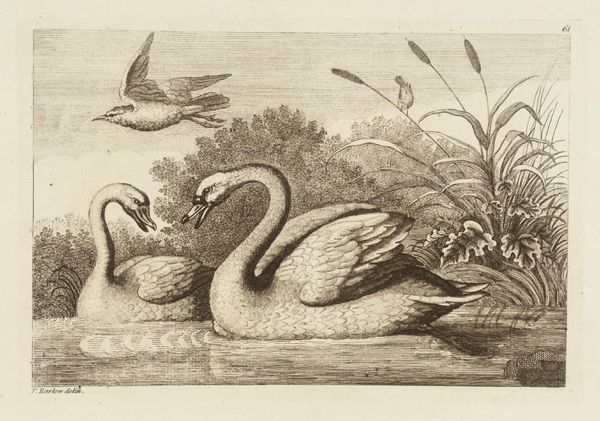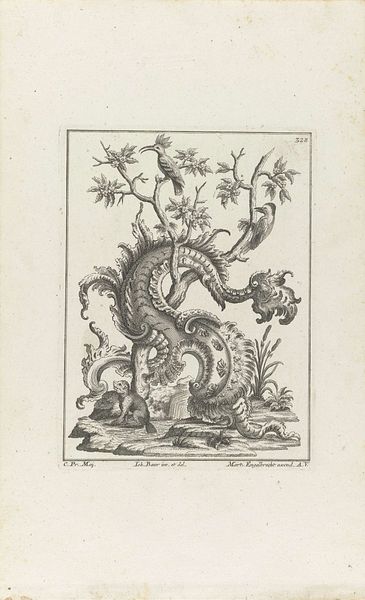
drawing, print, etching, paper, ink, pen, engraving
#
drawing
#
neoclacissism
#
aged paper
#
toned paper
#
light pencil work
# print
#
etching
#
pencil sketch
#
landscape
#
paper
#
personal sketchbook
#
ink
#
coloured pencil
#
sketchbook drawing
#
pen
#
watercolour illustration
#
sketchbook art
#
engraving
#
miniature
#
watercolor
#
realism
Dimensions: height 166 mm, width 209 mm
Copyright: Rijks Museum: Open Domain
This delicate image of a lizard and worm lizard was rendered by Simon Fokke, sometime in the 18th century. Serpents, like the ones Fokke presents here, have long coiled through the human psyche. In ancient cultures, these limbless reptiles often symbolized primordial chaos, regeneration, or even healing, as seen in the caduceus. Yet, within the Abrahamic traditions, the serpent embodies temptation and the fall from grace, a motif chillingly echoed in artistic depictions from the Garden of Eden. Consider how these symbols, charged with such potent, contradictory meanings, resurface in art across time and space. A serpent devouring its own tail, the Ouroboros, might suggest the cyclical nature of existence or the alchemical process of transformation. The image of the snake, whether in its life-giving or destructive form, engages our subconscious. It taps into primal fears and desires, reminding us of the fine line between knowledge and ruin, a theme that continues to fascinate and terrify.
Comments
No comments
Be the first to comment and join the conversation on the ultimate creative platform.

